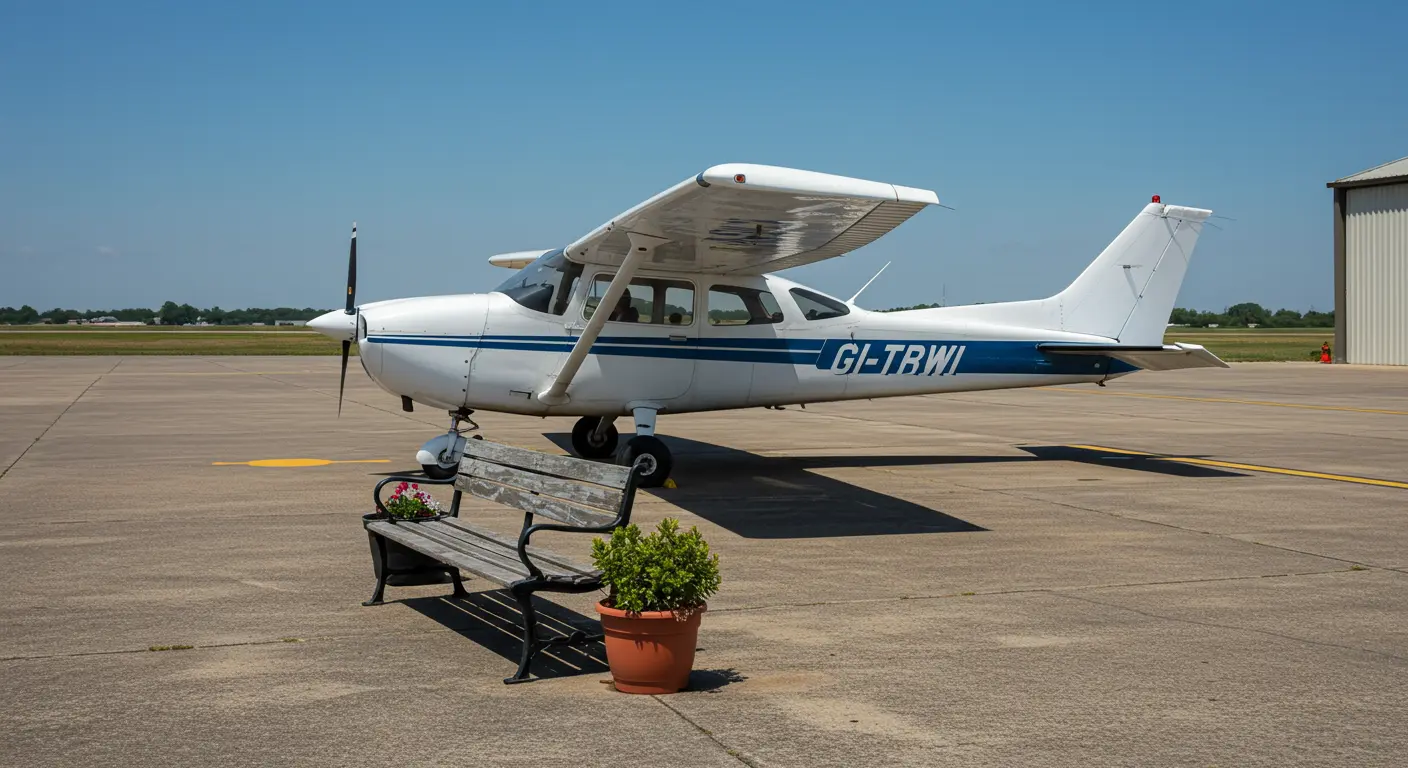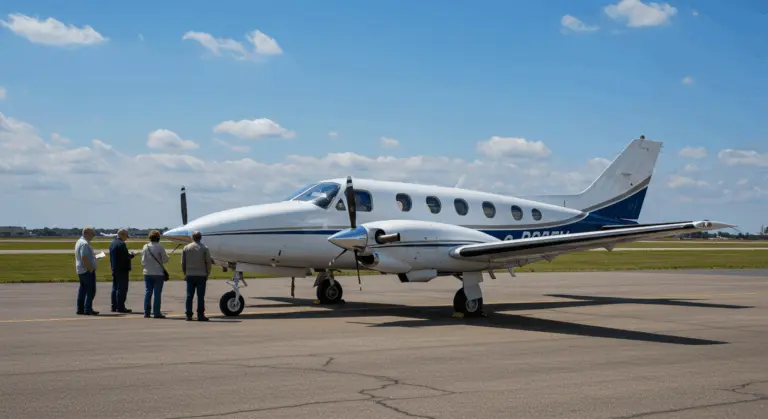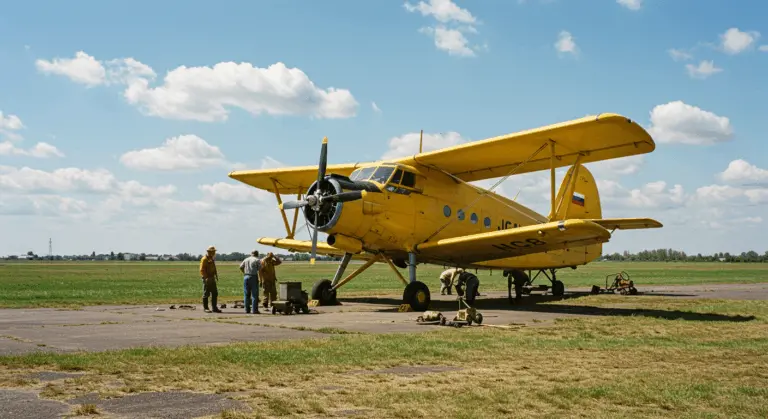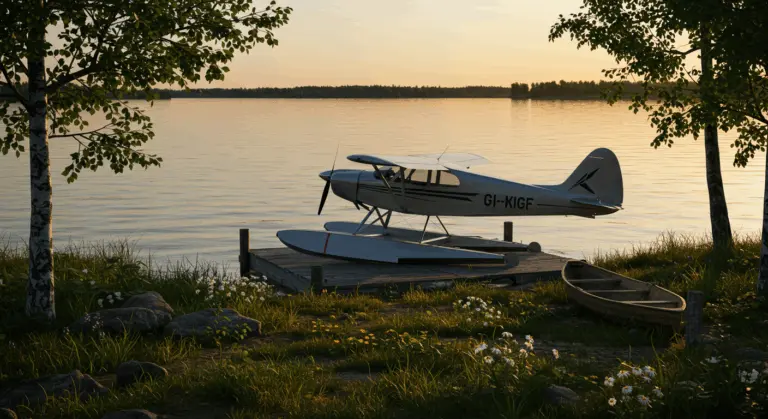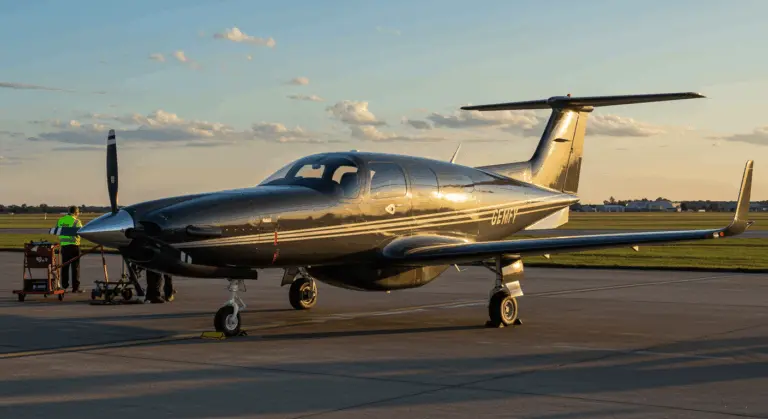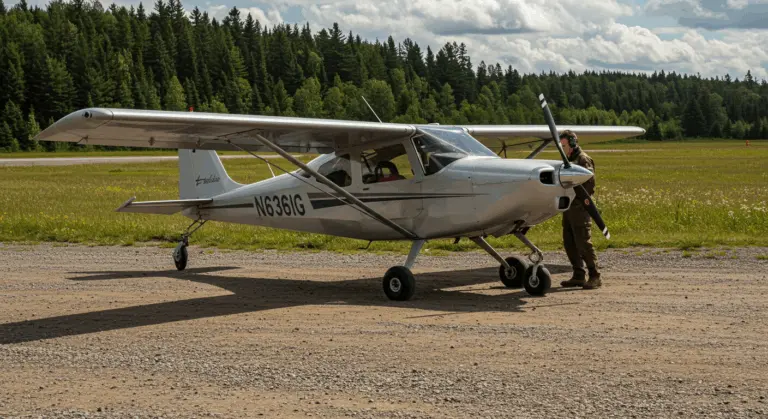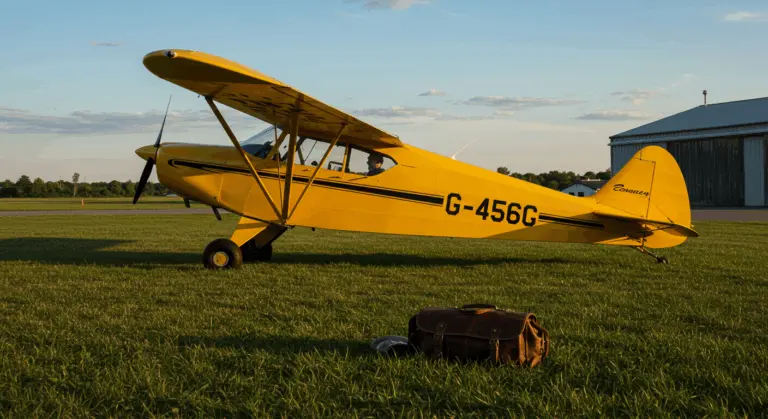How Much Does a Cessna 172 Cost? A Comprehensive Guide
Overview of the Cessna 172 Sky hawk
The Cessna 172 Sky hawk stands as the most produced civil aviation aircraft in history—a testament to its enduring appeal. This iconic single-engine, high-wing airplane comfortably accommodates a pilot and three passengers while featuring fixed conventional landing gear. What makes it so legendary? The answer lies in an unbeatable combination of reliability, versatility, and forgiving flight characteristics that have made it the go-to choice for flight schools and private owners worldwide.
Key technical specifications for the Cessna 172 include:
-
Length: 27 ft 2 in
-
Wingspan: 36 ft 1 in
-
Height: 8 ft 11 in
-
Wing Area: 174 sq ft
-
Empty Weight: Approx. 1,691 lbs
-
Max Gross Weight: 2,450 lbs
-
Standard Fuel Capacity: 56 US gallons
-
Engine: 160 hp Becoming IO-360-L2A
The Sky hawk’s semi-monocoque fuselage and all-metal wings combine durability with practical functionality. While this proven design has remained largely consistent over the decades, modern variants incorporate advanced materials and advanced technology. Today, the Cessna 172 remains general aviation’s workhorse—cherished not only for its forgiving flight characteristics but also for an impressive safety record that demonstrates its engineering excellence.
Price of a New Cessna 172
Purchasing a brand-new Cessna 172 Sky hawk represents a substantial investment for any aviation enthusiast or flight school. As of 2023, the base model commands approximately $359,000, though this figure can escalate rapidly to between $400,000 and $600,000 depending on selected options, avionics packages, and customizations. This high price reflects the aircraft’s position as the leading choice in training and personal aircraft within the general aviation market.
A new Sky hawk includes several advantages:
-
A comprehensive manufacturer’s warranty for peace of mind.
-
The latest technology in avionics, safety systems, and engine performance.
-
Improved fuel efficiency compared to older models.
The price trajectory of new Cessna 172s shows how the market has evolved. Over the decades, costs have climbed significantly—due not just to inflation, but to significant improvements in aircraft technology, enhanced safety features, and escalating manufacturing expenses. Despite this considerable investment barrier, flight schools and individuals keep choosing new Sky hawks. Why? This is because of their legendary reliability, exceptional training characteristics, and robust resale value—factors that make the high initial cost worthwhile over time.
Buying a Used Cessna 172
The used Cessna 172 market provides significantly more affordable Sky hawk ownership compared to purchasing new. Pre-owned models present a dramatic price spectrum—from as low as $30,000 for vintage models to upwards of $235,000 for recent, meticulously maintained examples. This wide price range makes Cessna 172 ownership accessible to pilots with different budgets and varying operational requirements into the Sky hawk family.
A used Sky hawk’s value is primarily determined by several key factors:
-
Age and Condition: Older models from the 1960s-70s are less expensive, while recent aircraft command premium prices.
-
Airframe & Engine Hours: Total time on the airframe and time since engine overhaul (TBO) are critical value drivers.
-
Avionics: Modern glass-panel upgrades significantly increase value over original instruments.
-
Maintenance History: A complete and well-documented maintenance log is essential.
-
Cosmetic Condition: The quality of the paint and interior directly impacts price.
The Cessna 172 excels in the used market: its remarkable value retention. Thanks to unwavering popularity, proven reliability, and relentless demand for training aircraft, Sky hawks consistently outperform many other general aviation aircraft in holding their value. This strong resale market provides financial security—owners can typically recoup a substantial portion of their investment when the time comes to sell.
Key Cost Factors to Consider
When evaluating the true cost of Cessna 172 ownership, the purchase price is just the beginning. Prospective owners face ongoing expenses that can significantly reshape the total financial commitment.
These expenses vary significantly based on aircraft age, condition, location, and usage patterns. A comprehensive understanding of these costs is important for crafting an accurate budget and avoiding unexpected costs. The reality is that: many first-time aircraft owners dramatically underestimate these ongoing expenses, which can sometimes eclipse the annual cost of financing the aircraft itself.
1. Engine Overhaul and Replacement
Engine overhaul represents one of the most substantial maintenance expenses in Cessna 172 ownership. The Becoming engines powering most Sky hawks carry a recommended TBO (Time Between Overhauls) of 2,000 hours, though many engines continue operating safely beyond this milestone with diligent maintenance. When overhaul time arrives, owners face significant costs: costs typically range between $20,000 and $40,000, depending on the specific engine model and the scope of work required.
The final cost of an engine overhaul is influenced by several factors:
-
The choice of service provider (e.g., specialized engine shop vs. the manufacturer).
-
The number of parts needing replacement versus reconditioning.
-
Any upgrades or modifications performed during the process.
Some owners opt for more expensive factory-remanufactured engines, which typically include a warranty.
Smart financial planning for engine expenses helps Cessna 172 owners avoid being caught off-guard. Many establish an “engine reserve” fund, systematically setting aside money for each hour flown—effectively distributing the eventual overhaul cost across the engine’s operational lifespan. Consider this example: if an overhaul costs $30,000 and occurs every 2,000 hours, banking $15 per flight hour creates a fund that easily covers the overhaul when needed. This proactive approach turns what could be a major financial burden into a manageable, predictable expense while providing a realistic picture of true hourly operating costs.
2. Annual Inspection and Maintenance
Annual inspections represent a non-negotiable reality for all certified aircraft, including the Cessna 172, creating a predictable yearly expense for owners. These thorough examinations ensure airworthiness compliance and typically cost between $1,000 and $3,000 for a Sky hawk, varying with maintenance facility choice, local labor rates, and aircraft condition. However: this figure covers only the inspection itself—any issues uncovered during the process trigger additional repair costs that can quickly multiply.
Beyond the annual inspection, routine maintenance contributes significantly to ownership costs and includes:
-
Regular oil changes (typically every 25-50 flight hours).
-
Periodic replacement of consumable parts like tires and brakes.
-
Compliance with mandatory service bulletins.
-
Addressing normal wear and tear.
These items can add several thousand dollars to annual operating costs, particularly for older aircraft.
The maintenance philosophy adopted by owners significantly influences costs. Some embrace owner-assisted annuals to trim labor charges, while others utilize progressive inspection programs to distribute workload throughout the year. Building a solid relationship with a reputable maintenance facility specializing in Cessna aircraft often pays dividends—their intimate familiarity with common issues frequently translates to more efficient, cost-effective repairs.
3. Insurance
Insurance stands as an unavoidable expense for Cessna 172 owners, with premiums varying widely based on multiple variables. Most Sky hawk owners face annual insurance costs ranging from $1,500 to $5,000, though this figure can increase significantly for newer aircraft with higher insured values or pilots with limited experience. Understanding these factors helps owners budget effectively for this essential expense.
Several key factors determine insurance premiums:
-
Aircraft Value: The insured hull value is a primary driver of cost.
-
Pilot Experience: Insurers assess total flight hours, hours in type, recent flight activity, and pilot age. Less experienced pilots face significantly higher premiums.
-
Intended Use: Flight training or rental use costs more to insure than personal flying.
-
Geographic Location: Basing an aircraft in areas with higher risks (e.g., coastal regions, high-theft areas) can increase rates.
-
Coverage Limits: Higher deductibles can lower annual premiums.
For an accurate assessment, prospective owners should obtain quotes from aviation insurance specialists.
4. Paint and Refurbishment
While not strictly operational expenses, paint and interior refurbishment represent substantial periodic investments that are part of Cessna 172 ownership. A complete exterior paint transformation for a Sky hawk typically costs between $10,000 and $20,000, influenced by design complexity, material quality, and the paint shop’s reputation. This investment cycle typically occurs every 7–10 years, as aircraft paint deteriorates from constant exposure to sunlight, precipitation, and temperature extremes.
Interior refurbishment costs vary widely based on the extent of work performed. Basic interior refreshes, including new seat upholstery and carpet, might cost $5,000 to $8,000. More comprehensive interior renovations involving new side panels, headliners, control yokes, and instrument panel overlays can easily reach $10,000 to $15,000. These cosmetic improvements not only enhance the ownership experience but also play a crucial role in maintaining the aircraft’s value.
Avionics upgrades, while technically distinct from cosmetic refurbishment, often coincide with interior work and are another major expense. Modernizing a Cessna 172’s panel with digital displays, modern navigation equipment, and contemporary communication systems can range from $15,000 for basic upgrades to over $50,000 for comprehensive glass cockpit conversions. These improvements enhance aircraft capabilities and increase market value, often providing some return on investment when the aircraft eventually changes hands. Many savvy owners approach refurbishment projects incrementally, strategically spreading costs across several years instead of doing everything at once.
5. Fuel and Operating Costs
Fuel consumption stands as one of the most predictable yet significant operating expenses for Cessna 172 owners. The typical Sky hawk burns approximately 8–10 gallons of aviation fuel (avgas) per hour during normal operations. With avgas prices fluctuating between $5 and $7 per gallon in most regions—sometimes climbing higher—fuel alone costs $40-$70 per flight hour. This consumption varies based on altitude, power settings, aircraft weight, and weather conditions, but the expense remains remarkably consistent.
Beyond fuel, the true hourly operating cost requires accounting for reserves for major components:
-
Engine Overhaul: As previously discussed, this is the largest reserve expense.
-
Propeller Overhaul: Typically costs $3,000-$5,000 every 2,000 hours.
-
Other Time-Limited Components: Various parts with mandated replacement intervals.
When these factors are combined with routine maintenance, most owners calculate total operating costs between $100 and $150 per flight hour.
Flight frequency significantly affects ownership cost-effectiveness—something many people don’t consider. Aircraft flown regularly tend to experience fewer maintenance headaches than those sitting unused for extended periods. Regular operation prevents corrosion and keeps seals and gaskets properly lubricated. Additionally, fixed costs like insurance and hangar fees become increasingly economical on a per-hour basis with higher utilization. Smart owners track both hourly operating costs and total annual expenses divided by hours flown, creating a comprehensive financial picture of their flying activities.
6. Hangar Fees
Aircraft storage represents an ongoing expense that varies greatly based on geographic location and storage type. Hangar fees for a Cessna 172 typically span from $150 to $1,000 monthly ($1,800 to $12,000 annually), with major metropolitan areas and coastal regions commanding premium prices. Climate-controlled hangars or those at prestigious airports naturally cost more than basic shelter at rural airfields.
Owners have several storage options, each with different costs and levels of protection:
-
Enclosed Hangars: Provide the best protection from weather, sun damage, and vandalism but are the most expensive.
-
Shared Hangars: A more economical option that still offers complete weather protection.
-
T-Hangars: A popular middle ground, offering private, enclosed storage at moderate rates.
-
Outdoor Tie-Downs: The most affordable option ($50-$250 monthly) but exposes the aircraft to the elements, accelerating wear and increasing risk.
Many owners find that the long-term preservation of their aircraft’s value justifies the higher cost of enclosed storage. Some reduce costs through hangar-sharing or by purchasing a hangar condominium.
Ownership vs. Renting a Cessna 172
The ownership versus rental decision for a Cessna 172 requires weighing financial realities against lifestyle preferences and flying habits. From a purely economic standpoint, ownership typically becomes cost-effective around 100-150 annual flight hours. Below this threshold, renting often proves more economical due to ownership’s substantial fixed costs—insurance, hangar fees, and annual inspections—that must be paid whether the aircraft flies frequently or not.
Ownership offers several compelling non-financial advantages:
-
Flexibility: Fly on your own schedule without booking conflicts or return deadlines.
-
Control: Dictate maintenance standards and customize the aircraft’s avionics and interior.
-
Familiarity: Gain deep knowledge of a single aircraft’s performance and handling characteristics.
-
Pride of Ownership: Enjoy the unique satisfaction that comes with owning your own plane.
Conversely, renting eliminates ownership headaches while offering distinct advantages. Renters pay only for hours flown. Maintenance, storage, and insurance typically fold into the hourly rate. A major advantage is predictable costs—no surprise repair bills or depreciation concerns. For infrequent flyers, renting provides aviation access without ownership’s substantial commitment. Middle-ground solutions like flying clubs or partnerships distribute costs among multiple users, blending ownership benefits with reduced financial burden.
Conclusion: Making an Informed Decision
The Cessna 172 Sky hawk is one of general aviation’s most enduring and versatile aircraft, with pricing that spans a remarkable spectrum based on age, condition, and equipment. New models command between $359,000 and $600,000, offering the latest technology and comprehensive warranty coverage. The used market makes ownership accessible with prices ranging from $30,000 for vintage models to $235,000 for recent, well-equipped examples. This broad spectrum ensures prospective owners can find options aligning with their budget constraints and operational demands.
Beyond acquisition costs, prospective Sky hawk owners need to understand the ongoing costs of aircraft ownership. Engine reserves, maintenance, insurance, hangar fees, and operational costs typically add $10,000 to $20,000 annually to the ownership equation—even for modestly used aircraft. These expenses stay relatively constant regardless of flight frequency, making ownership most economical for those maintaining regular flying schedules.
The decision to purchase a Cessna 172 should weigh financial considerations with personal priorities and flying habits. For frequent flyers who value availability, customization, and ownership pride, purchasing a Sky hawk is often very satisfying despite the significant investment. Those with irregular flying schedules or budget constraints might find renting or shared ownership arrangements more suitable. Whatever path you choose, the Cessna 172’s legendary reliability, straightforward handling characteristics, and robust support network make it an exceptional choice for both training and personal transportation. Through thorough cost research, understanding ongoing expenses, and honest assessment of flying needs, prospective owners can make smart decisions that align with both their aviation aspirations and financial realities.

